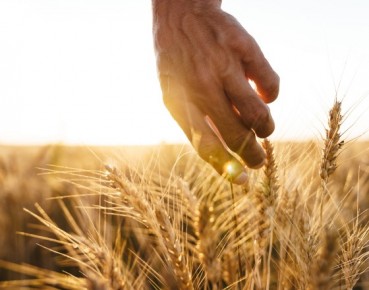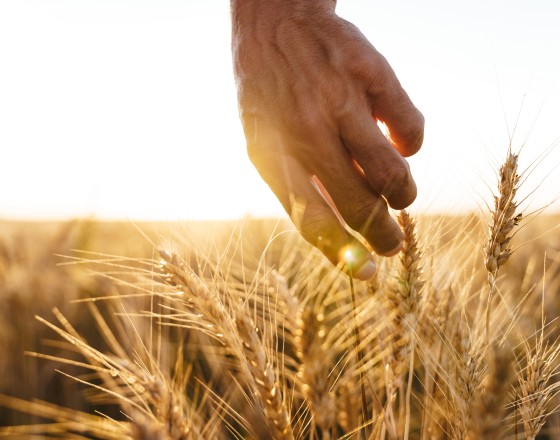Tydzień w gospodarce
Category: Trendy gospodarcze
Professor of Economics and Agricultural and Resource Economics Emeritus North Carolina State University, Raleigh, NC

(©Envato)
Underestimating a rival has reminded other historians of an earlier analogous blunder when Russia challenged Japan in the Pacific after it lost its grain markets in Europe in the 19th century. Russia suffered a humiliating defeat in the Russo-Japanese War that was followed by the Revolutions of 1905 and 1917 and the end of the Romanov dynasty.
Professor Service also points to a second blunder that contributed to the February 2022 invasion. The United States encouraged Ukraine to move toward joining NATO. Specifically, on November 10, 2021 the U.S. and Ukraine signed a Charter on Strategic Partnership, which stated America’s support for Ukraine to pursue membership in NATO. This act was considered by Mr. Putin to be a major threat to Russia. The invasion has important military and political effects, but the invasion has also had many economic effects, including shocks to world grain and energy markets.
RUSSIA AND UKRAINE AS HISTORIC EXPORTERS OF GRAIN
The rich soil north of the Black Sea has contributed to the region being a historically important producer of grain. Both Russia and Ukraine have been major historical producers and exporters of grain, and in 2021 Russia was the world’s largest exporter of wheat (17% of world wheat exports), and Ukraine was the fifth largest wheat exporter. Russia and Ukraine have been important players in the world wheat market, but they are not monopolists. In 2021, Australia was the 3rd leading exporter, the US was 4th, Argentina was 6th, and Canada was 7th.
Violence in and near the Black Sea has disrupted trade of both Ukraine and Russia and contributed to shortages and price increases for grain and related products. Voluntary trade is mutually beneficial, and trade disruption is harmful to both exporters and importers. Both sides have shown some awareness of this “lose-lose” situation, and it led to the temporary agreement by Russia, Ukraine, Turkey, and the United Nations to allow safe shipment of commercial products of both Ukraine and Russia on the Black Sea and through the Turkish straits. However, Putin threatened to abandon the grain deal weeks after its start. If Russia refuses to protect commercial ships in the Black Sea, there is some discussion among a coalition of allies of Ukraine about providing naval escorts for Ukrainian ships. A similar plan was used to escort ships carrying oil in the Persian Gulf in the 1980s when they were threatened by Iranian forces.
OCEANS OF GRAIN: RUSSIA AND JAPAN IN 1905
A historical episode involving Russia and Ukraine in the 19th century may be relevant to the current crisis. History need not repeat itself, but some historical patterns are stable. Other patterns may change because people learn from historical mistakes and avoid them in the future. A new book, Oceans of Grain by Scott Reynolds Nelson, studies some major shocks to the world wheat market in the 19th century, and how Russia’s aggressive response led to a war with Japan. In the first half of the 19th century, Tsarist Russia dominated the European wheat market. Note that after the third Partition of Poland in 1795, Russia was much bigger than it is today. Tsarist Russia included part of Poland, the Baltic countries, and Ukraine. After 1865, the United States became a major producer and exporter of wheat, as did Canada, Australia, and Argentina. Major innovations in shipping and railroads greatly increased the volume of trade. Economic historian, Kevin O’Rourke, referred to this trade expansion as the “European Grain Invasion”.
SOURCES OF INNOVATION IN THE WORLD GRAIN MARKET
What were the sources of shocks to the world grain markets in the 19th century? The United States became a major producer and exporter of wheat as Great Plains production increased after the end of Civil War in 1865. Major technical change occurred in transportation (railroads and ships). There was major European migration of workers to America, and slavery was outlawed. New grain companies were founded. The so-called ABCD companies emerged: Archer Daniels Midland, Bunge, Cargill, and Louis Dreyfus were founded, and they remain important today. Grain futures contracts were developed. Outside the US, grain production expanded in the areas newly settled by Europeans: Canada, Australia, and Argentina. The innovations that made these countries become major producers and exporter persisted, and they remain among the world’s largest grain producers in 2022. Some of the grain companies continued their operations in Russia after the invasion of Ukraine, in spite of criticism by supporters of Ukraine.
RUSSIAN RESPONSE TO INNOVATION: MOVEMENT TO THE EAST
These innovations were interpreted by Russian leaders as serious threats to Russian dominance of the grain market, and they sought ways to offset the adverse effects on Russian grain exports. One aggressive reaction was a movement to the East, beginning with the costly construction of the Trans-Siberian railroad (construction 1891-1916) that would give Russia access to Port Arthur (now Dalian, China, on the Liaodong Peninsula), a warm water Asian port that would be open the entire year. The project was approved by Tsar Alexander III and implemented by Count Sergey Witte. However, this move to the East by Russia was considered by Japanese leaders to be an encroachment on Japan’s Asian spheres of influence in Manchuria and Korea. Russia’s aggressive movement into Asia was based on an underestimation of the strength of Japan. It ended as the Russo-Japanese War of 1904-1905, which resulted in the destruction of the Russia Pacific fleet, and a humiliating defeat for Russia. Nelson boldly suggests that this reaction by Russian leaders to a shock to the grain market was a major blunder that may have contributed to the 1905 and 1917 Russian Revolutions that deposed the Romanov Dynasty
THE CASE FOR INVADING UKRAINE IN 2022: WAS IT WRONG?
Mr. Putin claimed Russia was being threatened by expansion of NATO to Ukraine. He considered Ukraine militarily weak and he assumed they would be defeated quickly at low cost. The earlier annexation of Crimea with little opposition was expected to be a model for seizing Ukraine. Allies were expected to disagree about whether and how to defend Ukraine. To many observers, Putin’s recent policies toward Ukraine look like policy blunders that remind Nelson and other historians of Russian policy blunders in the 19th century that led to Russia’s defeat in the Russo-Japanese War and the displacement of the old Russian leaders. Does the 19th century Russian response to the European Grain Invasion provide a lesson for current Russian leaders?
It now appears that Russia underestimated the strength of Ukraine. Expectations of Putin and his supporters prior to the invasion that the war would be short and low cost have been demonstrated to be wrong. In fact it has already lasted more than six months with high casualties on both sides. Supporters of the invasion expected weak resistance from Ukrainians, especially from Russian speakers, but instead they got a strong resistance that continues. Russian leaders expected to split the Western allies, but instead the invasion united them. Sweden and Finland had been neutral and German policy had been committed to long-term dependence on Russia for energy. In fact, Sweden and Finland turned against Russia, and applied to join NATO. Germany reversed its longstanding energy trade policy toward Russia, and it has also provided direct support for Ukraine in the war.
Germany took explicit action to reduce its long-term dependence on Russia for natural gas. German Chancellor Olaf Scholz decertified the newly completed Nord Stream 2 pipeline in February 2022, as Russia initiated the war in Ukraine. The costly pipeline that took years to complete from Russia under the Baltic Sea to Germany, has not been used, and it lacks authorization to be used in the future. The owner of Nord Stream 2 declared bankruptcy in March 2022, and it laid off all of its employees.
Russia has now reduced supplies of natural gas to Europe from Nord Stream 1 in an attempt to blackmail European trading partners who are supporting Ukraine. Also military action in the Black Sea has caused shortages and price increases for grains. In the short-run, these restrictions on export supplies will provide Russia with some leverage over European customers who support Ukraine. However, using energy and grain exports as a weapon erases all credibility Russia had as a reliable supplier of exports. The use of trade restrictions today will be harmful to future exports of energy and grain, which are Russia’s main sources of export revenue. The long-run decrease in demand for Russian exports is a self-inflicted wound, courtesy of current Russian leaders.
To export oil in the presence of sanctions from traditional customers, Russia has to find new buyers and sell at discount prices. The problem of finding new customers is more serious for natural gas, since pipelines are the least cost mode of transportation. Once a pipeline like Nord Stream 2 is completed to a destination, such as East Germany, changing customers and destinations requires building an entirely new pipeline. Russia’s aggressive use of natural gas restrictions as a weapon can only harm the future of its natural gas exports to Europe.
In the case of crude oil, Russia has gained from a higher price that offsets a smaller volume of exports. However, the G7 rich countries and the European Union have proposed a countermeasure that would impose a maximum price on oil bought from Russia, and they are trying to recruit other countries. Russian officials have said they will not sell oil at prices imposed by other groups, but if trade does not occur, Russia gains nothing from the higher world price.
Former Russian allies in Poland, the Baltic states, and other Central and Eastern European countries are now supplying arms to Ukraine and accepting large numbers of Ukrainian refugees. Poland has received an estimated 2-3.5 million Ukrainians. Might the Russian people interpret the invasion of Ukraine as a leadership mistake that reminds them of the leadership errors of the 19th century?
These are reasons why some Russians might oppose the government’s policies, but it is harder to measure the strength of opposition. Public opposition is punished. We know many Russians have left the country for destinations, such as Turkey and the Republic of Georgia. According to Elina Ribakova, the Deputy Chief Economist at the Institute of International Finance, ”The people who are either leaving or planning to leave are highly educated and generally young. This is your most productive part of the labor force that is disappearing.”.
Some prominent leaders in the Russian energy industry have expressed opposition to the war in Ukraine. Lukoil markets gasoline in some states of the United States, and its chairman, Ravil Maganov, urged a quick end of the war. He recently died from a fall from a 6th story window of a hospital, and he is not the only person from the Russian energy industry to die under suspicious circumstances recently. How much opposition is there from influential Russians?
RUSSIA AS ONE OF THE POORER COUNTRIES IN EUROPE
What other reasons might Russian citizens have to be dissatisfied with their leadership? In spite of their abundant endowment of natural resources, Russians live in one of the poorer countries in Europe, and their incomes are expected to fall by 5% in 2022, after the invasion in February 2022. Russia’s likely long-term loss of export markets will reduce economic growth.
Russian gross national income per capita for 2021 reported by the World Bank using its Purchasing Power Parity (PPP) measure was $32,000. Russian income per capita was below nearly every group of European countries. It was below the $38,000 for the World Bank’s grouping of Europe and Central Asia. Russia’s income per capita was below that of former Soviet Baltic Republics of Estonia ($41,570), Latvia ($33,790), and Lithuania ($41,250). Of the former USSR republics in Europe, Russian income is only above its current ally, Belarus ($20,000), and Ukraine ($13,860), the country it invaded. Could this disparity be one reason many Ukrainians do not want to reunite with Russia?
Russia is poorer than the former COMECON countries of Central and Eastern Europe: Poland ($35,830), Czech Republic ($42,560), Hungary ($35,640), and Slovakia ($32,450). Russia is poorer than nearly all (26 of 28) of the members of the European Union. The current exceptions (Bulgaria $26,000 and Greece $31,410) are just below Russia.
Russia is much poorer than the new NATO countries of Sweden ($61,000) and Finland ($55,000). Russia is also much poorer than its contiguous western neighbor, Norway ($82,000), a leading NATO member with higher income per capita than the United States ($70,480). Putin claims that being surrounded by NATO countries is a military threat. The relative affluence of NATO and EU neighbors may be a bigger threat to Russian leaders. The possibility of raising their standard of living to the levels now enjoyed by other Europeans must make Russian citizens dissatisfied with current leaders.
CONCLUSION
Russia has been a major exporter of grain and energy, but the invasion of Ukraine has interfered with both markets. As a result, both Russian exporters and their customers have been harmed. The loss of trade is a lose-lose situation for the two sets of trading countries, and it is a net loss to the world as a whole. The resulting waste is equivalent to using oil and natural gas to make a big fire to destroy grain.
The recent compromise to allow commercial shipments by both Ukraine and Russia to safely travel in the Black Sea and through the Turkish Straits seems to be an acknowledgement that destroying productive trade is foolish for both sides. It remains to be seen how long this compromise will last and whether cooperation will be extended to other activities. Mr. Putin already threatened to abandon the grain deal weeks after it was implemented.
Expanding voluntary trade is in the interest of most of the population of both Russia and Ukraine, but autocratic rulers may be more interested in expanding their own control over larger geographical areas. It is clear that Mr. Putin wants to control Ukraine, and he is willing to impose large costs on the Russian people to seek his territorial goal. Tsarist leaders sought control over Asian territory, but they underestimated the power of Japan, and they suffered a humiliating defeat in 1905 that led to the replacement of Russian leaders. Will the invasion of Ukraine have a more favorable outcome for current Russian leaders? Given the recent death of Mikhail Gorbachev, one cannot resist wondering what relations between Russia and Ukraine would be like if Gorbachev were still the leader in Russia.



